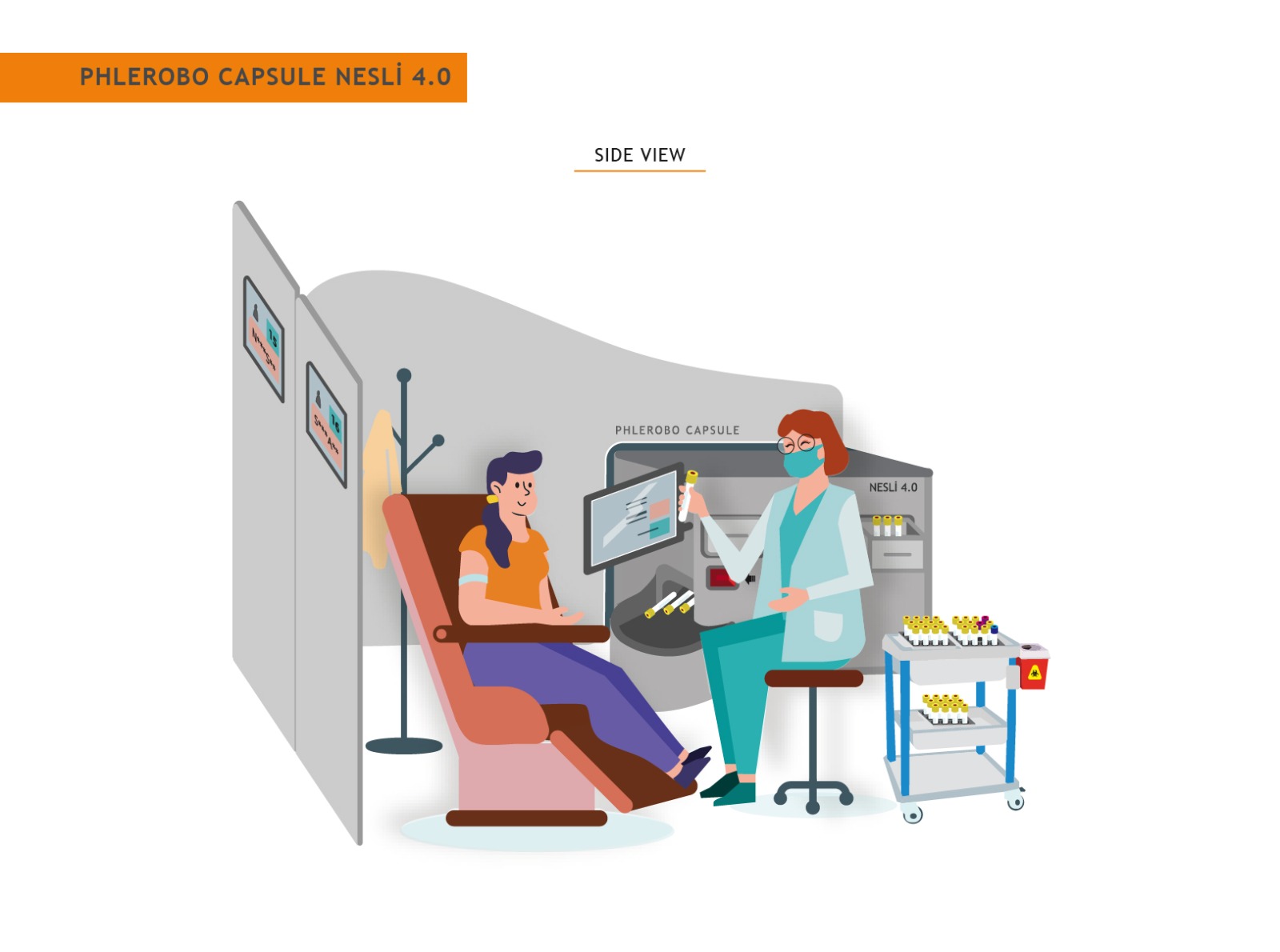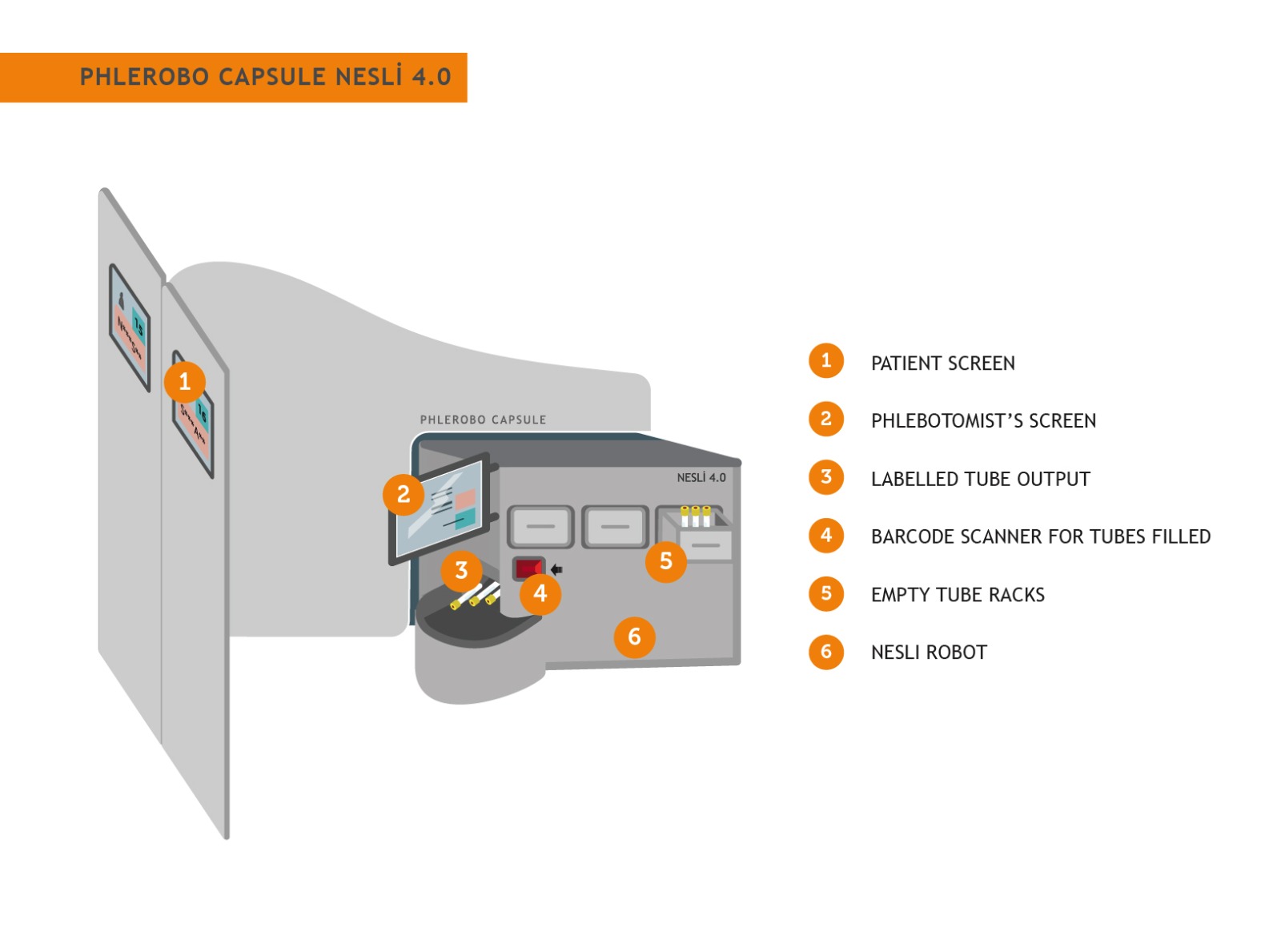Phlebotomy is a service that covers approximately one-third of all outpatients. For this reason, blood collection units are places where crowds and accumulations can easily occur.
Traditionally, hospitals have designed blood collection units as central units. Centralization of the service provided administrative convenience, savings and standardization. However, the recent efforts of some hospitals to spread the service to polyclinic floors or to different buildings mean that they question the centralization approach.
Spreading the phlebotomy service has several advantages. Providing the service at different locations enables patients to access the service more easily. It is also prevented that patients accumulate in high numbers in the unit. Different locations reduce patient numbers - per location. Hospitals highly value this feature in terms of preventing the spread of the pandemic during and after the Covid-19 conditions.
Reducing the size of the groups waiting for phlebotomy services may well be a very effective option in preventing spread of viruses like Covid-19 . Because, triage of symptomatic COVID-19 patients and non-symptomatic patients is not sufficient, as the majority of infectious patients are asymptomatic.
But there are also challenges and costs to deploying the distributed service. Patient referrals need to be redone. It becomes difficult to control and manage the service in different locations. Providing services in different locations also increases costs. For example, tube labeling costs may increase. The number of necessary back up personnel may increase. The fact that the hospital information management systems in use are not ready for the effective management of more than one location also causes managerial and supervisory problems.

Labenko has been conducting R&D studies for 6 years to ease the flow of phlebotomy patients. As part of these studies, with the support of TÜBİTAK, the artificial intelligence patient flow management system Phlerobo and its robotic assistant NESLİ 4.0 tube labeling robot were developed and started to be used in hospitals a while ago.
In line with the demand from hospitals, Labenko developed a new solution in order to distribute blood collection services to different locations in the most efficient way. This solution, called “Phlerobo Capsule”, simplifies the distribution of the service and reduces its costs.
The Phlerobo Capsule consists of two blood collection nurses, a NESLI robot and other necessary equipment (see pictures). In other words, creating a new blood collection unit with two nurses can now be done very quickly and easily.

Phlerobo Capsule can be easily managed remotely with the Phlerobo algorithm, and unit and personnel performances can be monitored in real time. Thanks to these facilities, it is entirely possible for the management to plan new locations by easily determining the occurrence of accumulations in a particular location. Minimum space required for both Phlerobo Capsule installation and operation.
Phlerobo Capsule offers two nurses two side-by-side cabins. There is an optional patient information screen for patients at the entrance of each cabin. A single NESLI robot, located between two cabinets and placed inside the screen, whose space requirement has been thoroughly optimized, offers tube labeling service to two nurses at the same time. With the Phlerobo Capsule, NESLI meets the nurse's need for a computer screen and a barcode reader to read the barcodes of the samples. In other words, the nurse does not need a computer or screen other than NESLI electronically. NESLİ meets this need and provides savings.

Phlerobo Capsule does not require a separate desk for patients to register when they come to the unit. Patients can easily register with a kiosk or with their mobile phones. They can expect to receive service without coming into contact with the tubes. Moreover, the patient flow rate is optimized by the artificial intelligence Phlerobo algorithm.
Spreading the bloodletting service has several advantages. Providing the service at different locations enables patients to access the service more easily. It is also prevented that patients accumulate in high numbers in the unit. Different locations reduce patient numbers - per location. Hospitals highly value this feature in terms of preventing the spread of the pandemic during and after the Covid-19 conditions.Süleyman Sevinç
Number of Phlerobo Capsules can be grouped together to form a little larger unit if needed. For example two capsules can be grouped together to form a center with 4 phlebotomists and 2 NESLI robots serving them.
Phlerobo Capsule groups can be distributed to various parts of the hospital as needed. Because with the web interface, it is no problem to control these groups from the administrative office and monitor the flow in real time. With very easy-to-use interfaces, information such as patient waiting times, personnel performance, and material usage can be accessed in real time.
In addition to all these, Phlerobo Capsule also offers a patient referral mobile application. With this application, patients can see their patient load in Phlerobo Capsule groups and can choose more convenient locations and times for themselves.
Labenko also assists hospitals in the location planning of the information-based blood collection unit. The desired support is provided to our hospitals in the selection, planning and installation of the most effective locations according to the patient flow. You can reach us by filling out the form below or sending an e-mail to info@labenko.com to spread blood collection services to suitable locations in your hospital.
A project done at SBU Tepecik EAH, based on Phlerobo system, has been selected amongst the best practices list of Ministry of Health.
When using pre-barcoded tubes, mostly blood collection units with high sample counts are considered ...